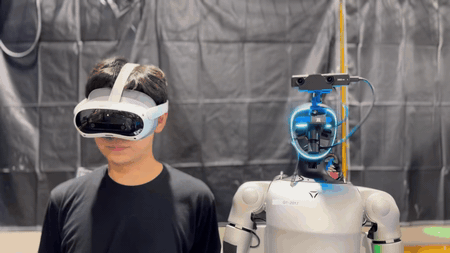AWS Spatial Computing Blog
Category: Technical How-to
Embodied AI Blog Series, Part 1: Getting Started with Robot Learning on AWS Batch
We have reached a milestone in technical evolution: the ability to use advanced AI models to influence not only the digital world but also the physical one. We are moving from AI that generates text to AI that moves atoms — augmenting our daily lives by folding clothes, organizing logistics, and reasoning through complex physical […]
Build a Spatial Object Tracking Pipeline with Create ML using Amazon EC2 Mac Instances
Introduction Apple’s Create ML enables developers to train powerful machine learning models without deep machine learning expertise, simplifying the path from concept to production. A new feature with Apple’s Create ML tool enables object tracking to be trained directly from the command line, unlocking faster and more scalable workflows. This is especially valuable for teams […]
AI-Powered Construction Document Analysis by Leveraging Computer Vision and Large Language Models
TwinKnowledge collaborated with AWS’s PACE team to develop a scalable computer vision and Large Language Model solution that efficiently processes thousands of architectural drawings while maintaining high accuracy, helping to reduce construction document errors and improve project efficiency through AI-augmented human review processes.
3D Design Reviews On-demand with Autodesk VRED and AWS
Introduction 3D product visualization and virtual prototyping are integral to product design, especially in industries including Manufacturing and Automotive. Last year, teammates from the AWS Spatial Computing community wrote a blog post about Autodesk VRED, a software package that helps designers’ prototype and collaborate on high-quality streams or renders of engineering artifacts. That post, titled […]
Text-to-Hologram: Unleashing Creativity with AWS Gen AI and Proto Hologram
In today’s digital landscape, where innovation is the driving force behind technological advancements, we find ourselves on the cusp of a paradigm shift. Imagine a world where creating captivating holographic content is as effortless as typing a thought. Thanks to our groundbreaking collaboration with the visionaries at Proto Hologram, this once-futuristic dream has become a […]
Empower Your WebXR App Using AWS Serverless Architecture
© Chand – stock.adobe.com What is WebXR? WebXR stands as a cutting-edge web standard designed to enable immersive virtual reality (VR) and augmented reality (AR) experiences directly within web browsers. This technology empowers developers to create and share interactive 3D environments online, offering users innovative and engaging ways to interact with digital content. Recent Developments […]
WebSocket APIs: Showcasing a Practical Networking Solution
As a Spatial Computing Prototyping Architect at Amazon Web Services (AWS), I work in a variety of development environments with varying networking needs. When a near real-time bi-directional networking solution is required, I consider using WebSockets. Amazon API Gateway WebSocket APIs are a serverless managed WebSocket solution that can be used with a variety of […]
Getting Started with Vision Pro and AWS
Learn how to start developing apps now for the upcoming Apple Vision Pro headset using Xcode and Amazon Web Services (AWS) services. This post walks through creating a basic VisionOS app, connecting it to Amazon Simple Storage Service (S3) storage, and dynamically loading 3D model assets into your VR scenes. In this post you will […]
How to: Create a VR application with user insights using AWS Amplify and WebXR
In this blog you will learn how to create a virtual reality experience with user insights to improve your product using AWS Amplify and Babylon.js’s WebXR implementation. Using this combination of technologies is just one way to help reduce the barrier of getting your first Virtual Reality (VR) application up and running. This how-to will […]
How to Host Cross-Platform XR Experiences on AWS
As a Spatial Computing Prototyping Architect at Amazon Web Services (AWS), I need to quickly build prototypes and proofs of concept to validate customer use cases. Whether I am building cross-platform Extended Reality (XR) experiences for meetings, for industrial training, or for multiplayer gaming, I can quickly provision AWS cloud resources on-demand to suit my […]









